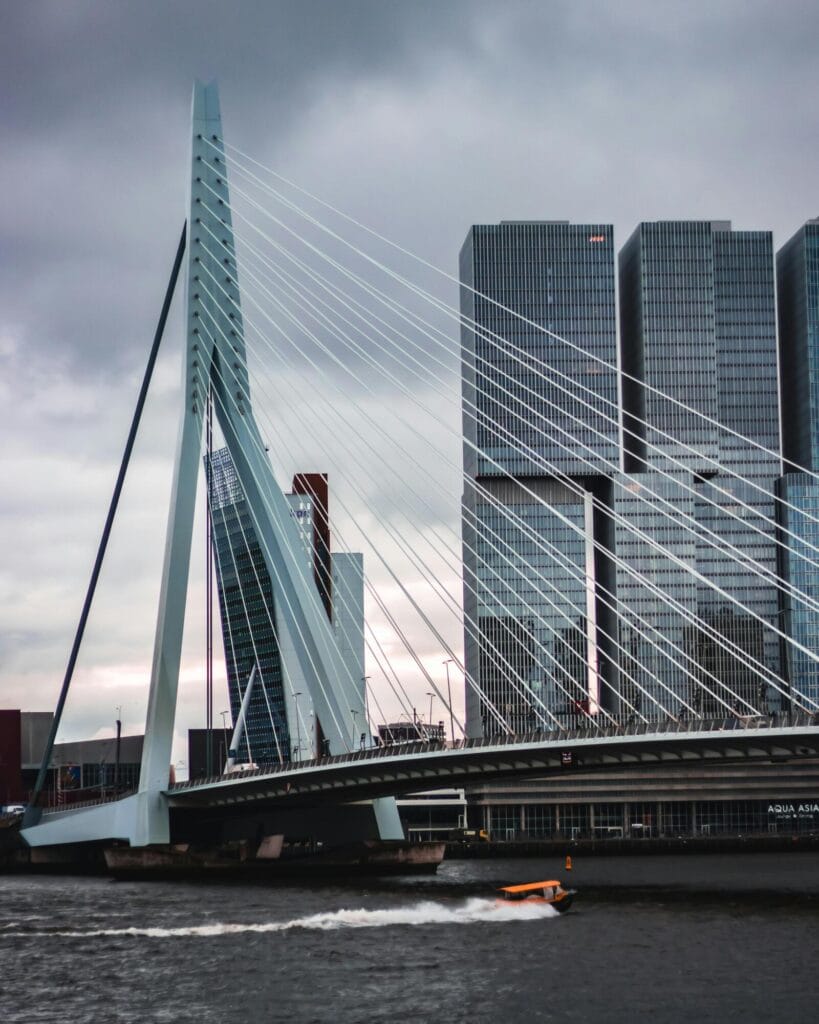For successful Low-Code projects, always set a clear dot on the horizon
19 February 2024 • Blog

What is the best way to start digitizing with low-code? How do you do it in a way that avoids the biggest pitfalls? And how do you boost innovation in your company with low-code? These were the main questions addressed during Ciphix Meet & Mx, on Feb. 5, with the theme “Discover the power of Mendix low-code. The main conclusion: every problem around digitalization is solvable, as long as you have a clear picture of the ‘dot on the horizon’, put it on paper and communicate it clearly.
This edition of Meet & Mx took place at the Gulpener Beer Brewery near the place, where Ciphix was founded over a decade ago. A good number of SMEs from the region were present because many companies see the need for digitization. A survey we conducted beforehand showed that if digitization projects are not followed through, companies fear operational inefficiency, higher costs and lower productivity.
Founder Marc Gelissen opened the afternoon and then gave the floor to Jan-Paul Rutten, head of the Gulpener Beer Brewery and the eighth generation to head this family business. In a highly competitive beer market, he knows better than anyone how important it is to always keep your eyes on the horizon if you want to survive in the market.
Setting a new dot on the horizon in time is essential.
Jan-Paul paints a picture of how his father began thinking about the importance of sustainability in beer brewing back in the 1990s. An idea that raised quite a bit of resistance at the time. Fellow executives asked: will it make us sell more beer or will it make beer cheaper? The answer in both cases was “no. Nevertheless, he persevered. He strengthened ties with farmers in the region and soon only local ingredients were used in Gulpener beer despite the fact that the quality fluctuated more due to weather conditions and the beer became more expensive.
Now over thirty years later, his story of sustainability is one of the key differentiators of the Gulpener Brewery. When Jan-Paul became director in 2015, he continued his father’s focus. He set a new dot on the horizon: by 2030, the brewery should run completely fossil-free. He, too, faced a lot of resistance in the beginning. People said it was impossible to sufficiently heat boilers without fossil energy. Yet only a few weeks later, employees came up with the first ideas on how it could be realized. Since then, the brewery has come a long way and, with a local heat pump technology supplier, is well on its way to becoming the most sustainable brewhouse in Europe.
Jan-Paul stresses the importance of putting a dot on the horizon on paper if you want to innovate. Only when you do that and the noses are all pointed in the same direction do people really start thinking about it. This does not mean that by putting a vision on paper, you must immediately change everything. Jan-Paul ends his story by saying that it is by taking small steps and adjusting them during the process that you have the greatest chance of reaching the final goal.
If you want to achieve your goal step by step, in the IT world they would call it “agile. That’s where Charles Bronzwaer goes deeper. As the second speaker, he shows how important digitization is in today’s business world and goes into more detail about the trade-offs companies face.
Digitization can no longer be put off
Charles argues that every company will eventually become a software company. Staff, customers and suppliers increasingly expect digital processes in a company to be in order. They simply are no longer used to anything else, whether in their personal lives or in business. Digitized processes in a company are increasingly becoming the new normal. Many companies want this too but struggle with making the right resources available. A challenge that is at least partly solvable by first making concrete what exactly you need when it comes to digitization.
Customization? A layer of flexible software around your existing systems?
And do you choose to buy or build software? The disadvantage of standard software is that it often fails to meet your company’s needs, resulting in the need for additional systems or adjustments to the software. The disadvantages are inefficiency or extra security challenges because you have to keep too many different systems safe. In addition, often only thirty percent of the functionality of standard software is used, while you pay for one hundred percent.
With low-code, you can quickly build custom systems that meet the exact needs of your business. Because you can easily visualize what the application will look like during the development process, you can make adjustments during the development process. A successful low-code application ultimately enables your company to do more work with the same amount of people, improve the customer and employee experience, and accelerate innovation.
Charles closes his talk with some examples that illustrate how mature low-code technology is. Many business-critical systems today are based on it. At the Belgian French fries factory Agristo(click for case & video), for example, a low-code application monitors fries quality. The PostNL app that processes some 1.5 million packages daily is also a low-code app. In short, low-code is a mature technology more than 10 years after its inception and it can support any company’s digitization needs.
Tips for companies looking to get started with low-code
The Belgian company EasytoCare, logistics service provider Seacon and Sitech Technieksystemen can talk about this. They come from this region and
have digitized their processes with low-code. In the panel discussion led by Marc Gelissen, they provide some important tips for companies looking to get started with low-code.
Desi Swartilé, is Program Manager at Easytocare(click for case study). This company takes medical professionals completely out of the hands of processing their paper and digital paperwork. They do so with a low-code application built on top of their current system. Daisy bendad stresses the importance of thorough internal research when you start digitizing. Through the thorough preliminary research, they found out at Easytocare that the many variables they face was their biggest challenge when building the application. By taking this into account when building the application, many pitfalls could be avoided.
Elias Becker, is Director of Supply Chain Solutions at logistics service provider Seacon(click for case study). At Seacon, too, they wanted to embark on a digitization journey and they chose low-code. Elias reiterates the importance of a small but impactful application when you start out. At Seacon, that became an application that automatically stores master data and pushes it to other applications. A small application but now that this is a success, he sees confidence in low-code and agile working growing. It’s not just about the software but it really is a business transition according to Elias.
The final panelist is Rob Gülickers, the CTO of Sitech Services, an engineering & maintenance company at the Chemelot site in Geleen. Many work processes at Sitech still took place on paper. Rob wanted to get started with digitization and started two pilot projects. He also faced a fair amount of resistance. Suddenly it became clear that no one really knew the work process from A to Z. They discovered this by visualizing it. They discovered this by making it visual with low-code .
His advice for companies starting with low-code? If you face a lot of resistance, ask yourself if it’s because of the low-code application or the work process itself? If it’s because of the work process itself, don’t get discouraged and continue down the same path. One of the biggest critics at Sitech finally gave in when it became clear how convenient it was to finally have all the information about the site together thanks to the low-code application.
No successful digitization without a dot on the horizon
After the Q&A, Marc Gelissen closed the official program. The final conclusion of the day? Just start, make sure your end goal is clear and you communicate about it Be prepared during ‘your journey’ to the end goal entirely according to agile principles to constantly adjust your route to the challenges you encounter along the way. Then you are most likely to reach your goal with digitization.
Attending the next Meet & Mx?
Would you also like to learn ‘live’ about digitizing business processes with low-code? Are you curious about the experiences of other companies? Then leave your details here and we will send you an invitation to the next Meet & Mx.
Related
We will help you further!
Replace outdated systems, digitize complex business processes and accelerate innovation.



